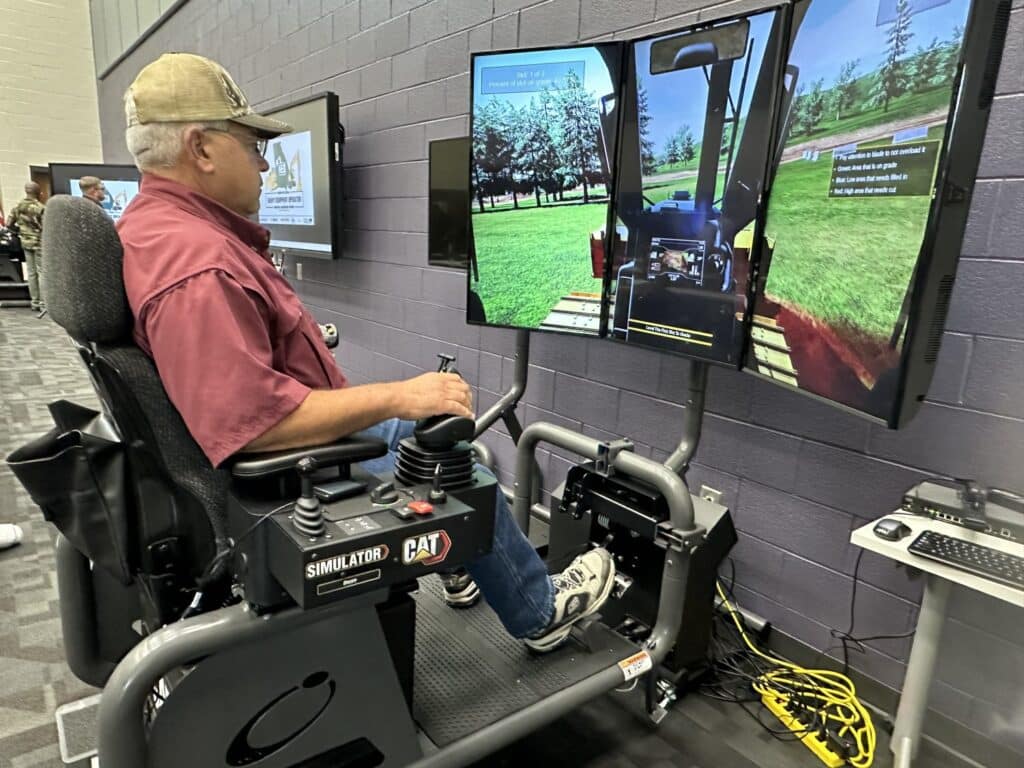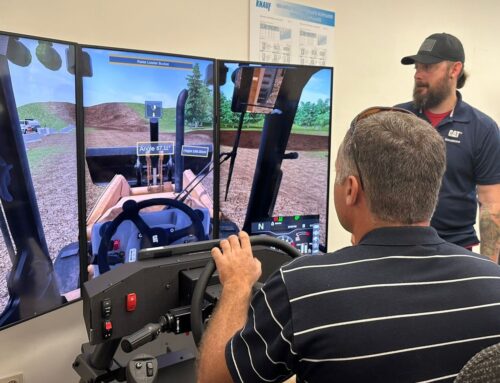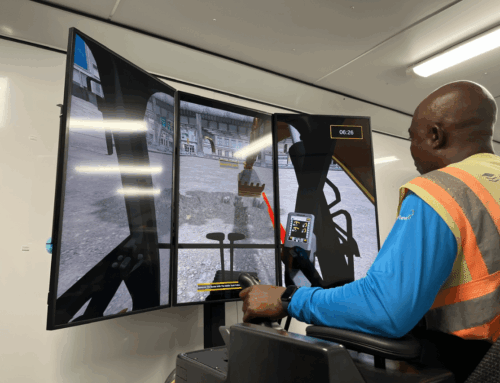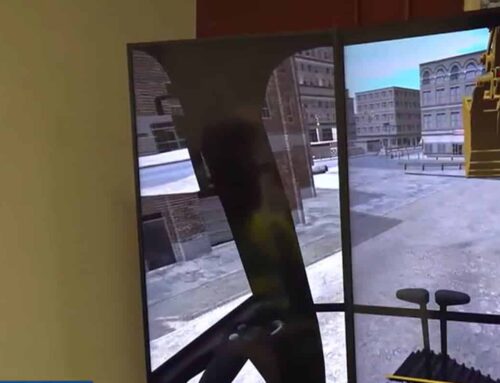Recently, heavy equipment operator (HEO) teachers from 25 high schools across the state of Georgia returned home from a three-day training event in Marietta, Ga., excited about the upcoming school year and knowing that their HEO classes could possibly change the trajectory of not only their students’ lives but also their students’ families’ lives.
The teachers are part of the successful Georgia HEO Pathway Program, which began in 2021 with six pilot schools and has now grown to include 25 schools. The 3-year-old program includes Cat® Simulators Dozer and Excavator systems in each classroom along with corresponding turn-key SimScholars™ curriculums.

In a “Train the Trainer” format, the 15 instructors who taught the course during the past two years shared their experiences and knowledge to help train this year’s 10 new instructors. The new instructors received hands-on training on the Cat Simulators and instruction on how to use the SimScholars curriculums.
“One of the great things about this program that just really inspires us, as industry people, educators, and everyone involved, is the reality that by connecting students with careers in our industry, it’s going to launch students out of generational poverty,” explained Jeremy Whitaker, Director of Training & Recruitment at C.W. Mathews Contracting Company, who helped develop the Georgia HEO Pathway program and organized the training event.
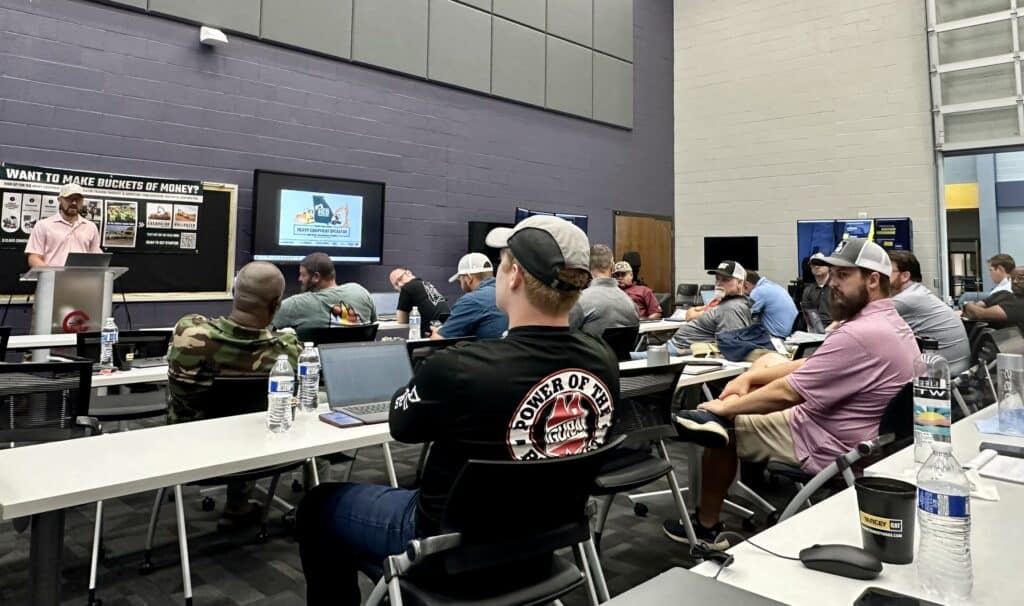
“We started this program because our industry is desperate for new talent. But we ran into a problem, which was that nobody knew that our industry even existed,” explained Whitaker. “Even though people drive on the roads and fly in airplanes that take off on our runways every day, they don’t know about the career opportunities available to them in the construction industry.”
Whitaker collaborated with the Georgia Highway Contractors Association (GHCA) to create the HEO program, which played a crucial role in its development and continues to provide ongoing support.
GHCA President and CEO David Moellering explained, “When we developed the heavy equipment operator program, it was out of necessity. We needed to find ways to get students interested in what we do. When we saw the Cat Simulators, we realized that was a way to capture students’ attention but would also give them a skill that they could immediately put to work.”
“We worked with our Department of Education, which has been very supportive in building the program. We’ve been very fortunate to have them partner with us.” Moellering added, “To date, we’ve had great success. As an employer, we’re enjoying some great success in getting students trained and ready to go to work.”
Whitaker explained they chose Cat Simulators systems because of the training modules and the authentic Cat® controls. “A student can go directly from the simulator to the real iron. It’s like putting on a comfortable pair of blue jeans. The transition is seamless.”
“From an education standpoint, you can’t ask for anything more than that. It really prepares them for the real iron that we need to build the roads for tomorrow,” noted Whitaker.

To help the new instructors understand the SimScholars Learning Management System (LMS), Nick Utech, SimScholars Curriculum Writer, guided them through the LMS and explained how to implement the tools and features effectively to run a successful training program.
“When I was an instructor, I remember going to training sessions that would teach you the material in a very condensed format or would cover how to use the data from the class,” said Utech. “I made sure that this training experience would help the instructors and not oversaturate them with the content they were going to teach. Instead, this training focused on how and why to use the tools, where to find them, and ways that they can easily modify their instructional approach to improve learner engagement and retention.”
One of the original six HEO instructors, Michael Denaro from Jones County High School, found the SimScholars curriculum invaluable for himself and his students. “The students can work through and learn more in-depth about the machine and the ‘why’ about what they’re doing,” explained Denaro. “They can at their own pace through the lessons and take notes. Then, when they’re ready to perform and take the quiz, they can move on from there. But the main thing is they’re learning different lessons that relate to the occupation of being a heavy equipment operator.”

This year’s new teachers received a wealth of helpful information, advice, and encouragement from past teachers and event organizers. Sheldon Deroux, an HEO instructor at Dunwoody High School, who was previously an electrical engineer, found the training helpful in preparing him for teaching heavy equipment. He explained, “I’ve never taught heavy equipment before. I’ve taught a little construction before, but not on the heavy equipment side. So, the resources and all of the support here has been exceptional.”
Deroux is confident that SimScholars will be extremely beneficial for him. “As a teacher, you have to find your way through and add in different techniques and information. What I’ve learned here these past couple of days is that all that information is done really well. It’s not something that’s over my head or my students’ heads. It’s really going to benefit the students a lot.”
As the program continues to grow, so does its success. “We now have hundreds of students all across the state enrolled in the program and numerous students being hired by contractors and interning with contractors,” said Whitaker. “It’s just beginning its third year and already bearing lots of great fruit.”

